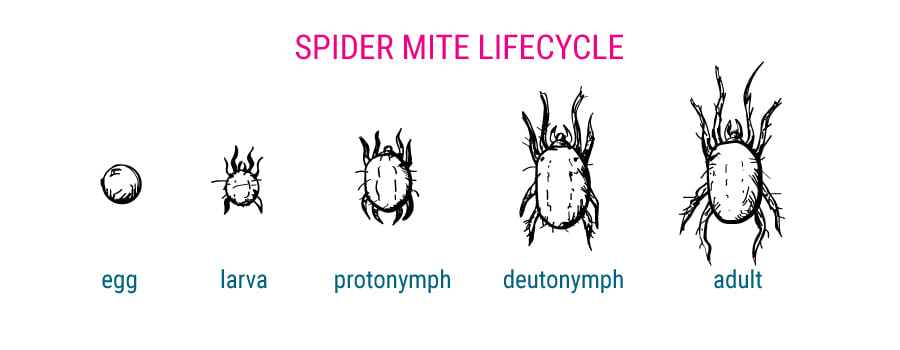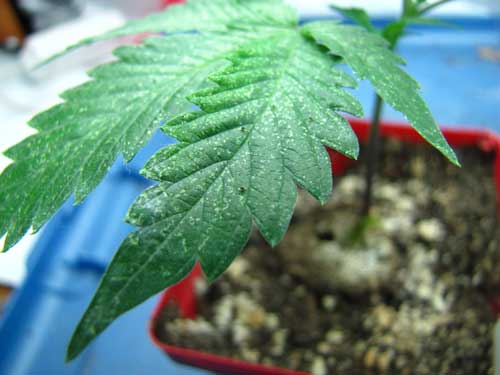How to Prevent Spider Mites For Medicinal Plants
There is no doubt that the medicinal plants' industry is a growing one. Man has cultivated this crop for many years. It seems that with all our years of experience, one issue that many growers are finding is that medicinal plants have many pest problems. Spider mites are any medicinal plants grower’s worst nightmare. This is because these pests are very difficult to eradicate. Growing operations are regularly losing crops to these pests, and understanding them is the key to controlling the problem.
1. How to Identify Spider Mites
If you see tiny insects (approximately 0.04 of an inch), as well as extremely tiny and translucent eggs, you might be having an infestation brewing up.
Spider mites are so tiny, the only way to accurately identify them is with a pocket magnifying glass. The best way to find spider mites on medicinal plants is by examining the leaves for damage. The shape of the body is oval, with slight bristling. The juveniles are pale green, with darker green spots developing with maturity.
Your suspicions can be further confirmed if you see tiny webs running from one leaf to another. Those webs are why these mites are called spider mites. The webs help protect the colony from dropping to the ground or being blown away by the wind. Yes, a colony.
Additionally, you may see tiny white spots on the leaves. Those spots mark the places where the mites have been feeding on the chlorophyll inside the leaves.
2. How to Control and Prevent Spider Mites
We do not recommend using chemical pesticides on spider mites. In most cases, this will only make matters worse by killing off other insects that prey on the mites.
Also, spider mites are notoriously good at developing resistance to common pesticides, so we suggest using some of the organic methods outlined below.
We also recommend addressing any environmental factors first, then following up by pruning and hosing down your plants.
- Environmental Factors
Remember, spider mites like hot and dry conditions. So, before you get started on any kind of countermeasure against a colony, try bringing down the temperature in your grow room (if possible, bring them down past 20ºC or 68ºF but be careful not to damage your plants).
Next, create some extra air circulation in your grow area. Spider mites hate windy conditions.
- Pruning and Hosing
Once you’ve addressed any environmental factors in your grow area, it’s time to start pruning.
If you’re only dealing with a small infestation, cut down any infected areas well past the mites’ webbing and discard them in the trash. If you’re dealing with larger infections on individual plants, consider destroying them to avoid the mites spreading.
Once you’ve pruned your plants, consider hosing them down gently. This will help remove any remaining mites and will also help prevent another infestation. You may want to hose them down periodically if you find you're dealing with mites on a regular basis.
Once you’ve done all of that, you may want to use one of the below control methods to minimise the risk of a future infestation. Remember to check up on your plants daily and to repeat treatment at least twice to avoid having the mites coming back.
Note: some growers hose down plants with a mix of water and alcohol (9:1 ratio). This mixture is known to kill mites on contact without damaging plants.
3. Life Cycle of the Spider Mite

The lifecycle of the spider mite changes according to the environment. For the ideal conditions, the humidity must be lower than 50 percent, with temperatures at 80 degrees Fahrenheit or above. In this environment, only five to seven days are necessary for the egg to mature into an adult. This process usually takes place from June until September.
When the process takes place during the spring or fall, the life cycle increases to about 19 days. The population of spider mites can be decreased when the humidity and temperature in the growing area are regulated. This is the best option if spider mites are identified on plants in a greenhouse. When food sources are scarce due to shortened sunlight hours, the females go into a stage called diapause.
During this stage, the color of the spider mite changes from green to orange. Spider mites will not lay eggs or eat during this period.
Keep a close watch on your plants, and react quickly at the First site of spider mites!!!!
If you’re interested in learning more about how to solve the spider mites in your garden, welcome to visit our official website: ecofarm.ca
Our emails address is: business@ecofarm.ca
Contact:


